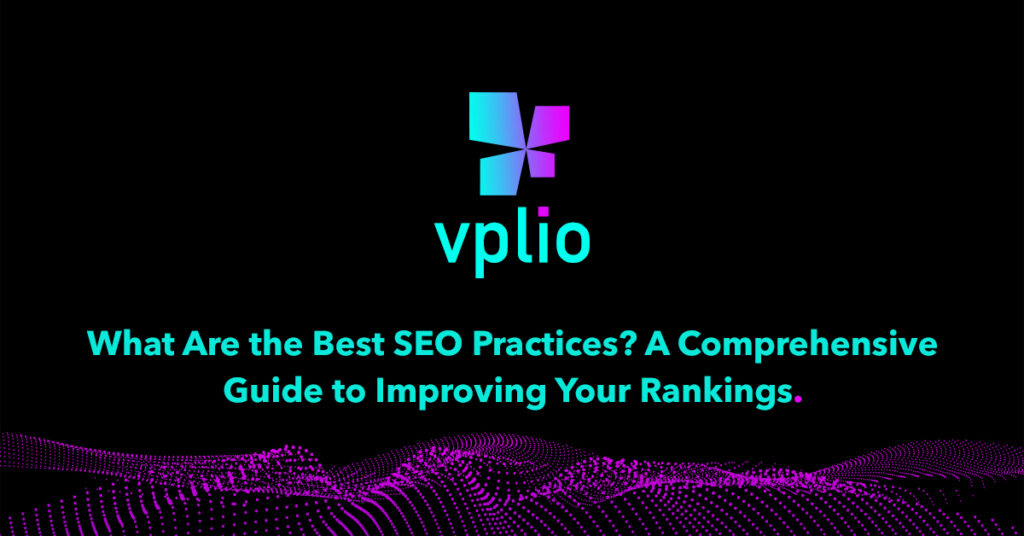What Are the Best SEO Practices? A Comprehensive Guide to Improving Your Rankings
Introduction In today’s digital landscape, having a strong online presence is crucial for success. Search Engine Optimization (SEO) is at the heart of this endeavor, serving as the bridge between your website and potential customers. With over 53% of all website traffic coming from organic search, mastering SEO can significantly enhance your visibility, drive more traffic, and improve your bottom line. This comprehensive guide will delve into the intricacies of SEO, including its components, strategies, and ongoing practices to ensure your website ranks high on search engine results pages (SERPs). What is SEO and Why is It Important? SEO (Search Engine Optimization) is the process of optimizing your website to improve its visibility and ranking on search engines like Google, Bing, and Yahoo. The ultimate goal of SEO is to attract organic (non-paid) traffic to your site, which can lead to increased engagement, conversions, and revenue. SEO is crucial for several reasons: Increased Visibility: Higher rankings in search results lead to more visibility and potential traffic to your website. Most users do not scroll past the first page of search results, making it essential to rank as high as possible. Credibility and Trust: Users tend to trust search engines. If your website ranks high, it is often perceived as more credible and trustworthy. This can enhance your brand’s reputation and reliability. Cost-Effectiveness: Unlike paid advertising, SEO focuses on driving organic traffic, which means you do not have to pay for each click or impression. While SEO requires an investment of time and resources, the long-term benefits often outweigh the costs. User Experience: SEO involves improving your website’s usability, which enhances the overall user experience. A well-optimized site is easier to navigate, faster to load, and provides valuable content, leading to higher user satisfaction. Key Components of SEO To master SEO, you need to understand its various components and how they work together. Here’s a detailed look at the main elements of SEO: 1. Technical SEO Technical SEO focuses on the backend aspects of your website to ensure search engines can crawl and index it effectively. Key components include: Site Architecture: A well-structured site architecture ensures that search engines can easily navigate and index your content. Use clear and organized URL structures, categories, and internal linking to facilitate this process. Crawlability: Ensure that search engine bots can access all important pages on your site. Use a sitemap.xml file and a robots.txt file to guide bots and manage crawl directives. Mobile-Friendliness: With the rise of mobile search, it’s essential to have a responsive website design that adapts to different screen sizes. Google uses mobile-first indexing, meaning your mobile site’s performance can impact your rankings. Page Speed: Page load times affect user experience and SEO. Optimize images, use browser caching, and minimize JavaScript to improve page speed. Tools like Google PageSpeed Insights can help you identify and address performance issues. SSL Certificate: Secure Sockets Layer (SSL) certificates encrypt data exchanged between users and your website. Google considers HTTPS a ranking factor, so ensure your site has an SSL certificate for added security and credibility. 2. On-Page SEO On-Page SEO involves optimizing individual web pages to rank higher and attract more relevant traffic. Key aspects include: Keyword Research: Identify the keywords and phrases your target audience is searching for. Use tools like Google Keyword Planner, SEMrush, and Ahrefs to find high-volume, relevant keywords for your content. Content Quality: Create high-quality, engaging, and informative content that addresses the needs and interests of your audience. Ensure your content is well-written, relevant, and provides value. Title Tags: Craft compelling and descriptive title tags for each page. Include primary keywords and keep the title length within 50-60 characters to ensure it displays correctly in search results. Meta Descriptions: Write persuasive meta descriptions that summarize the content of your page. Although meta descriptions do not directly impact rankings, they influence click-through rates (CTR) by providing a preview of your content. Header Tags: Use header tags (H1, H2, H3, etc.) to structure your content and make it easier for readers and search engines to understand the hierarchy of information. Include keywords in header tags to improve relevance. URL Structure: Create clean and descriptive URLs that include relevant keywords. Avoid using long, complex URLs with unnecessary parameters. A clear URL structure helps both users and search engines. Image Optimization: Optimize images by using descriptive file names and alt text. Compress images to reduce load times and improve user experience. Alt text also helps search engines understand the content of images. Internal Linking: Use internal links to connect related content within your site. This helps distribute page authority and improves navigation for users and search engines. 3. Off-Page SEO Off-Page SEO encompasses activities outside your website that impact your search engine rankings. Key components include: Backlinks: Earn high-quality backlinks from reputable sites to boost your site’s authority and credibility. Focus on acquiring links from relevant sources within your industry. Avoid black-hat techniques like buying links or participating in link schemes. Social Media Engagement: Engage with your audience on social media platforms to build brand awareness and drive traffic to your site. While social media signals do not directly impact rankings, they can influence your overall SEO strategy. Online Reputation Management: Manage your online reputation by monitoring and responding to reviews, mentions, and feedback. A positive reputation can enhance your credibility and attract more traffic. Guest Blogging: Contribute guest posts to authoritative blogs in your industry. This can help you build backlinks, increase exposure, and establish yourself as a thought leader. How SEO Works: The Process Understanding how SEO works involves knowing the key stages of the process: Crawling: Search engines use crawlers or bots to discover new web pages by following links from other pages. Crawling is the first step in indexing content. Rendering: Once a page is crawled, search engines render it to understand how it will appear to users. This involves processing HTML, CSS, and JavaScript to visualize the page’s layout and content. Indexing: Search engines analyze and store
What Are the Best SEO Practices? A Comprehensive Guide to Improving Your Rankings Read More »


